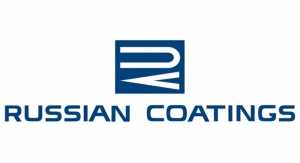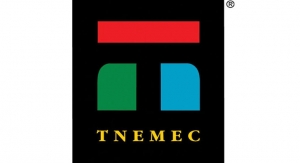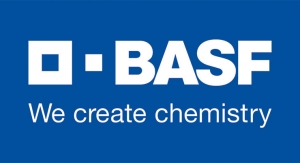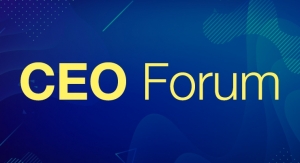Phil Phillips, Contributing Editor05.04.18
You don’t need a formal strategy role to help shape your organization’s strategic direction. Start by moving beyond frameworks and communicating in a more engaging way.
Are we entering the age of the STRATEGIST? We are observing most all of our industry spending greater percentages of its time coping with the increasingly volatile business environment and strategies to support its findings. The pressure has percolated up to the “C” Suite big time, forcing senior leaders into greater chunks of decision-making time to stay ahead of emerging opportunities and to respond more quickly to unexpected threats, and make timely decisions.
It is a well-known fact, exercise helps us strengthen our muscles. However, rare is the company where all members of the top tram have well-developed strategic muscles. Executives reach the C-suite via different routes: some because of functional expertise, others, including business unit heads and even some CEOs, are much stronger on execution than on strategic thinking.
We would suggest three simple directives that any executive can act on to become more strategic but, they require real work to perfect.
First, totally understand what strategy really means in the industry within which you play
Executives who reach the upper echelons of an organization most often have been exposed to a set of core strategy frameworks . . . . MBA; Executive Education Programs; Corporate training sessions . . . or, just on-the-job. Interestingly, part of the power of these frameworks is that they can be applied to any industry. However, this is also part of the problem.
General ideas can be misleading. Strategy is a journey, executives need to study, understand, and internalize the economics, psychology, and laws of their industries, so that context can guide tem continually.
EXAMPLES: Being able to think strategically in . . . .
• The high tech industry involves a nuanced understanding of strategy topics such as network effects, platforms, and standards.
• Utilities sector, it involves mastery of the economic implications of the regulatory regime.
• Mining leaders must understand the strategic implications of cost curves, game theory and rea-options valuations of cost curves.
Building this kind of industry understanding must be ongoing, not just because we live in an era of more dynamic management but because of the individual. War games or other experimental exercises are one way executives can help themselves look at their industry landscape from a new vantage point.
Second, become expert at identifying potential disrupters
Expanding the group of executives engaged in strategic dialogue will boost the odds of identifying industry disruptive changes that could be near-term. These would be the types of changes that make or break companies.
Insights from executive exercises do not emerge magically. If one considers technological disruptions for example. Many executives rise up the corporate ladder via understanding the industry specific technologies . . . those embedded in a company’s product DNA, for example. Then, as executives, they delegate thinking about such things. Yet this is exactly such cross-cutting trends that are most likely to upend value chains, transform industries, and dramatically shift profit pools and competitive advantage.
Picking up weak competitive signals is more often than not a result of careful practice . . . an executive with a diverse background can boost the quality of dialogue by contributing to and insisting on issue-based competitive analyses. If new technologies are involved . . .
• What are they?
• Who else might master them?
• Who is poorly positioned?
• How would these factors impact the industry’s competitive balance?
• What will acquisitions do to the industries we serve?
Develop communications that can break through
Executives hoping to become more strategic must look for opportunities to innovate in their communication data, while prodding their organizations to institutionalize such capabilities. The understanding and use of analytics and its impact on their respective industry, is one important technique to employ.
Phil Phillips, PhD is the president of CHEMARK Consulting Group.
Are we entering the age of the STRATEGIST? We are observing most all of our industry spending greater percentages of its time coping with the increasingly volatile business environment and strategies to support its findings. The pressure has percolated up to the “C” Suite big time, forcing senior leaders into greater chunks of decision-making time to stay ahead of emerging opportunities and to respond more quickly to unexpected threats, and make timely decisions.
It is a well-known fact, exercise helps us strengthen our muscles. However, rare is the company where all members of the top tram have well-developed strategic muscles. Executives reach the C-suite via different routes: some because of functional expertise, others, including business unit heads and even some CEOs, are much stronger on execution than on strategic thinking.
We would suggest three simple directives that any executive can act on to become more strategic but, they require real work to perfect.
First, totally understand what strategy really means in the industry within which you play
Executives who reach the upper echelons of an organization most often have been exposed to a set of core strategy frameworks . . . . MBA; Executive Education Programs; Corporate training sessions . . . or, just on-the-job. Interestingly, part of the power of these frameworks is that they can be applied to any industry. However, this is also part of the problem.
General ideas can be misleading. Strategy is a journey, executives need to study, understand, and internalize the economics, psychology, and laws of their industries, so that context can guide tem continually.
EXAMPLES: Being able to think strategically in . . . .
• The high tech industry involves a nuanced understanding of strategy topics such as network effects, platforms, and standards.
• Utilities sector, it involves mastery of the economic implications of the regulatory regime.
• Mining leaders must understand the strategic implications of cost curves, game theory and rea-options valuations of cost curves.
Building this kind of industry understanding must be ongoing, not just because we live in an era of more dynamic management but because of the individual. War games or other experimental exercises are one way executives can help themselves look at their industry landscape from a new vantage point.
Second, become expert at identifying potential disrupters
Expanding the group of executives engaged in strategic dialogue will boost the odds of identifying industry disruptive changes that could be near-term. These would be the types of changes that make or break companies.
Insights from executive exercises do not emerge magically. If one considers technological disruptions for example. Many executives rise up the corporate ladder via understanding the industry specific technologies . . . those embedded in a company’s product DNA, for example. Then, as executives, they delegate thinking about such things. Yet this is exactly such cross-cutting trends that are most likely to upend value chains, transform industries, and dramatically shift profit pools and competitive advantage.
Picking up weak competitive signals is more often than not a result of careful practice . . . an executive with a diverse background can boost the quality of dialogue by contributing to and insisting on issue-based competitive analyses. If new technologies are involved . . .
• What are they?
• Who else might master them?
• Who is poorly positioned?
• How would these factors impact the industry’s competitive balance?
• What will acquisitions do to the industries we serve?
Develop communications that can break through
Executives hoping to become more strategic must look for opportunities to innovate in their communication data, while prodding their organizations to institutionalize such capabilities. The understanding and use of analytics and its impact on their respective industry, is one important technique to employ.
Phil Phillips, PhD is the president of CHEMARK Consulting Group.

















